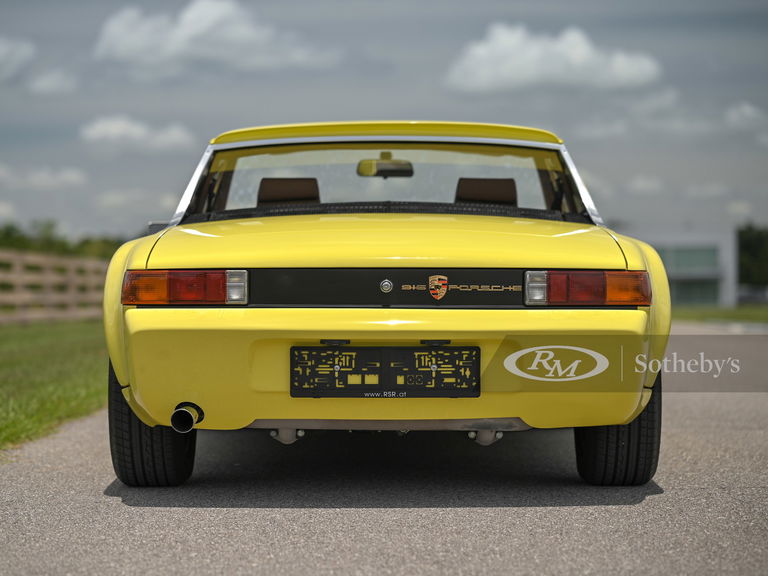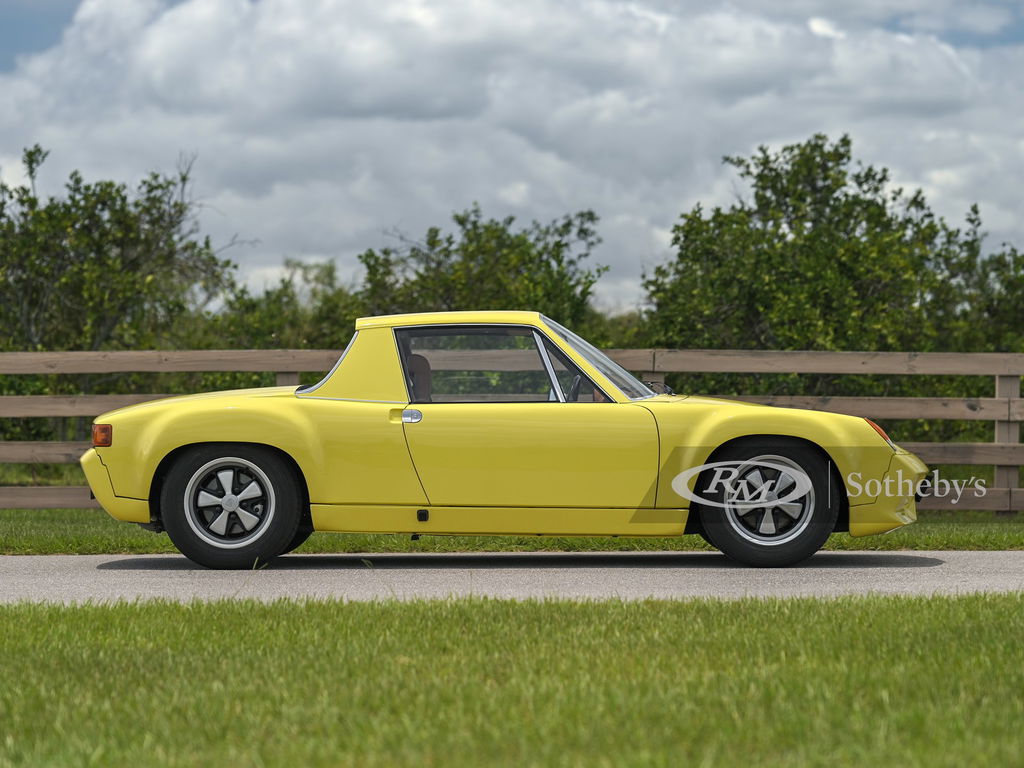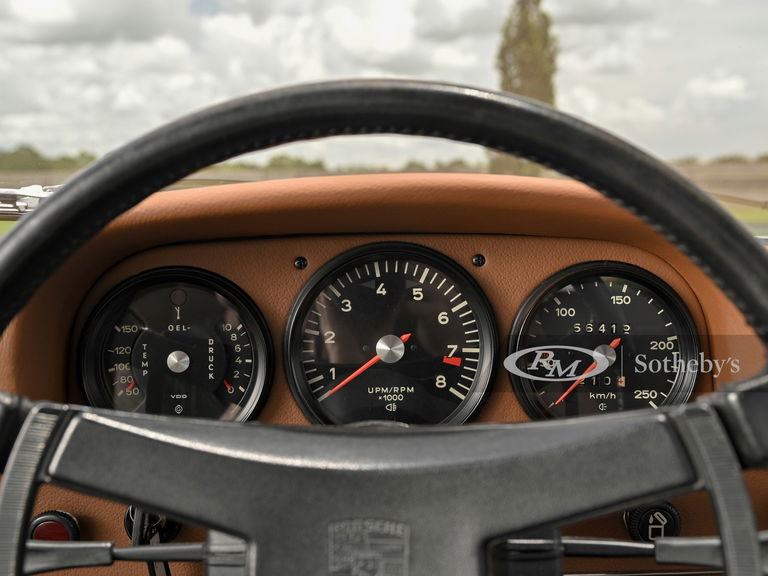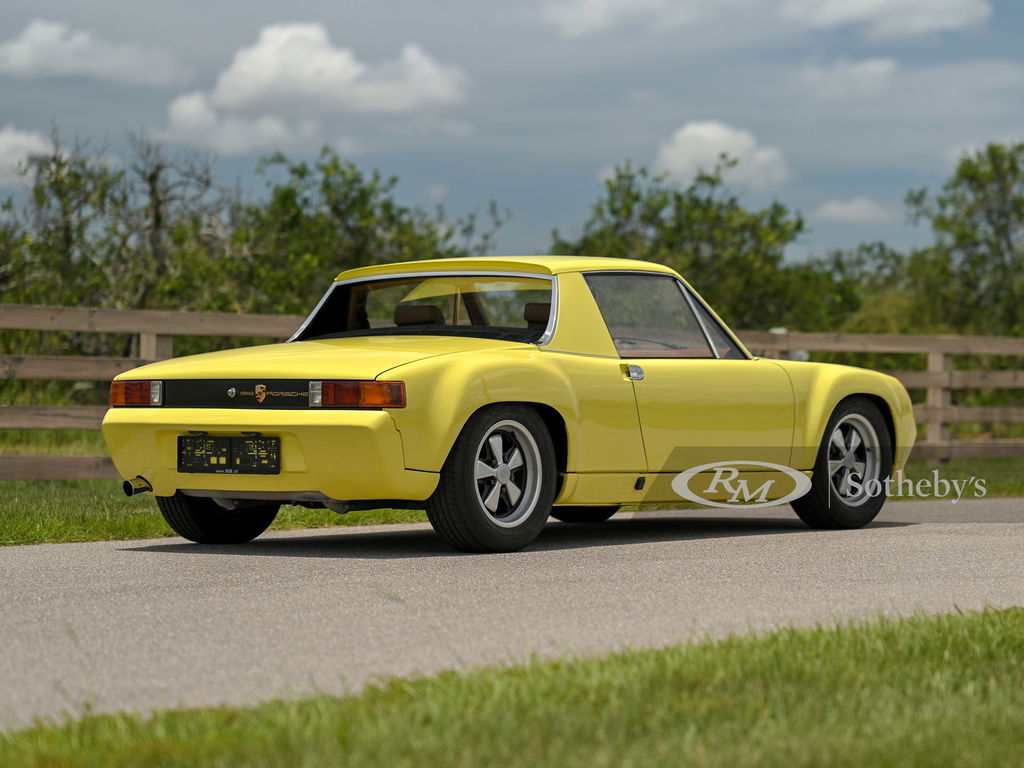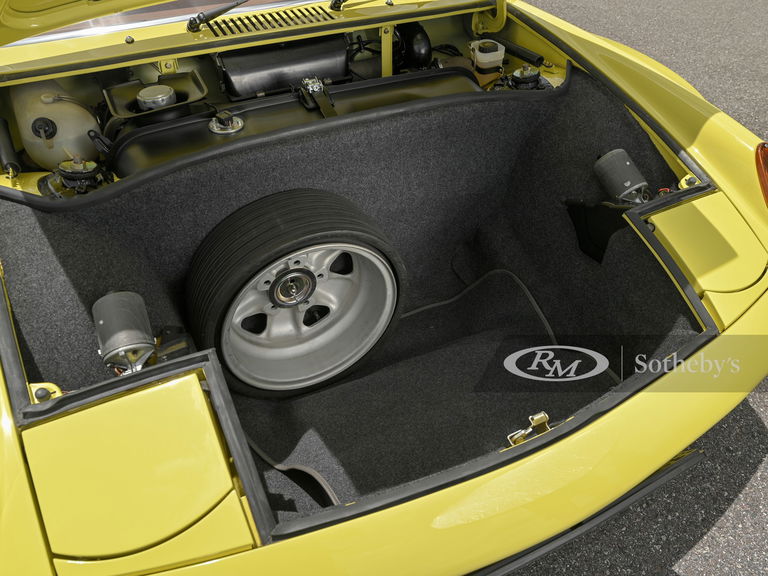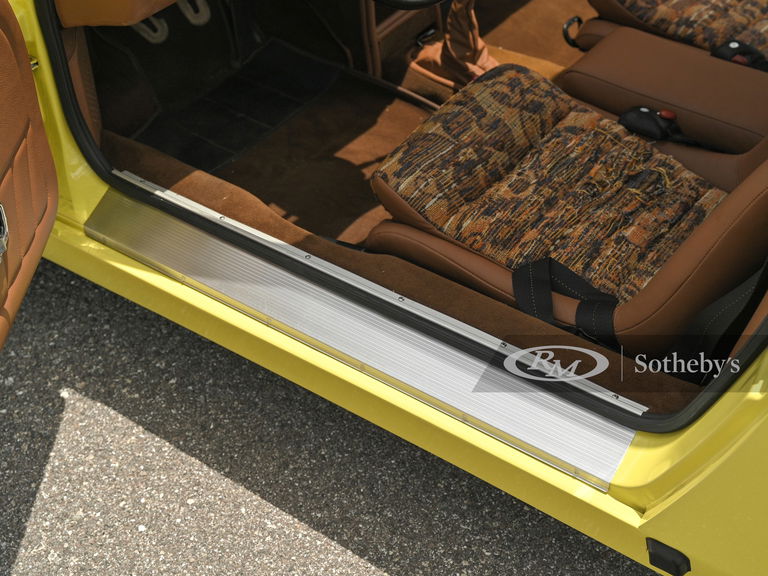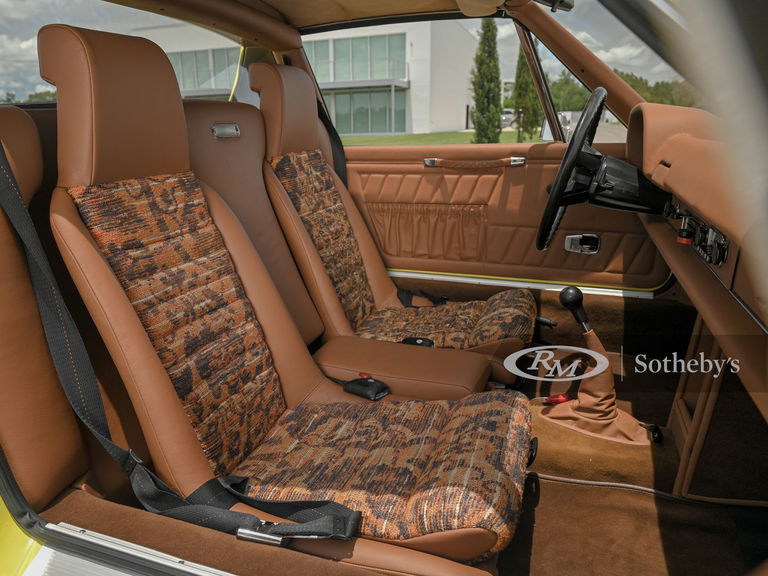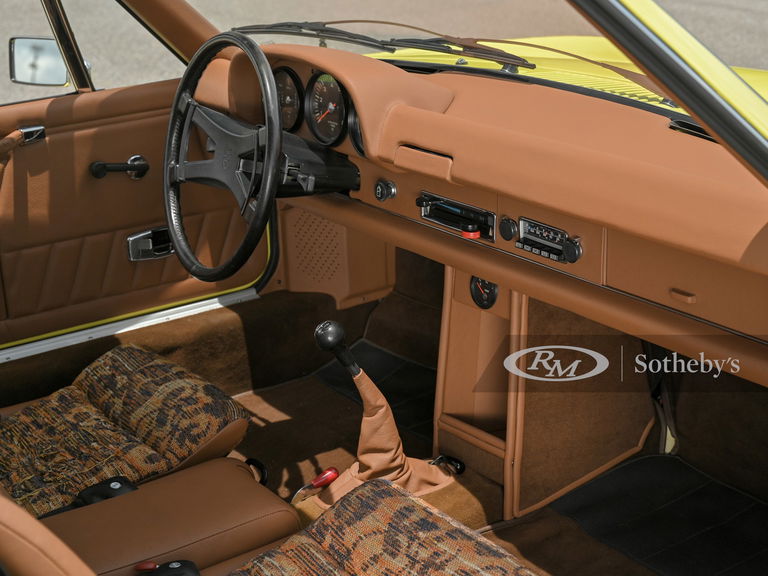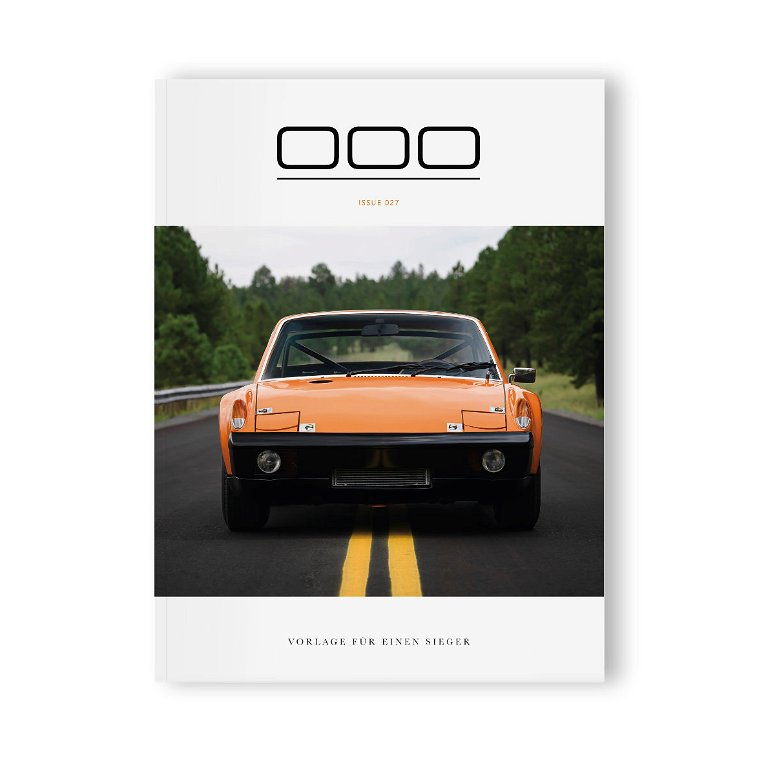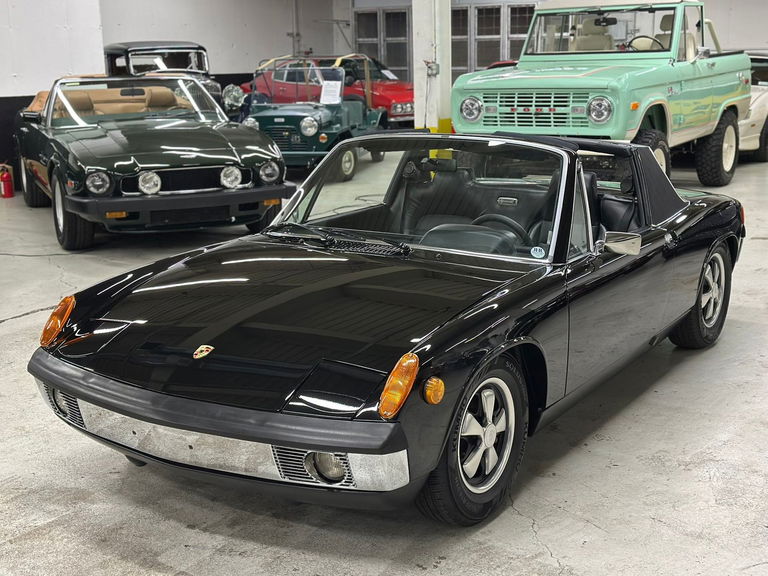The first 916 prototype was to have been unveiled at the 1971 Paris Auto Salon, but just two weeks before the show the entire project was cancelled due to its escalating cost. Ten more pre-production examples had either been finished or were nearing completion. Five of those ten were sold to management and friends of the company. The others were later sold privately. The 1971 prototype, not counted amongst these ten pre-production examples, nicknamed “Brutus”, went to Piëch, who gave the car to his wife. It was a ferocious automobile, equipped with a 2.9-liter, 245 bhp RSR engine. All the 916s are believed to survive; several still within the Porsche-Piëch families.
Intended to be a direct competitor of Ferrari’s 246 Dino, the 916 was based on a standard 914 tub manufactured by Karmann, but extensively modified by Baur, which welded in a new steel roof panel in lieu of the removable plastic top of the production cars. Baur also added chassis and suspension reinforcement plates and a set of steel flares for the front and rear fenders as used on the factory’s 914-6 GT race cars. The reinforcements gave the 916 the improved structural integrity demanded by the more powerful engine and larger wheels and tires. These components became the basis of the factory’s “GT Sportkits”. Both the front and rear fascias were of molded fiberglass modeled on those used on the 914-6 GT, with the nose containing a lip spoiler and ducting for an extra oil radiator, flanked by a pair of recessed driving lamps. Porsche’s Design Studio was given a free hand when it came to choosing the paint colors and interior trim. Numerous interior modifications were made, making the 916’s interior much more sophisticated and insulated than the 914.
In an effort to set the car apart from the 911 S, Porsche intended to fit the 916 with a 2.6-litre engine (type 911/56 for the U.S. and 911/86 for Europe). The first three 916 prototypes were fitted with the 2.4-litre 911 S engine producing 190 bhp, while the later cars were fitted with a 2.7-litre engine, producing 210 bhp. Even with these modifications, the 916 scaled some 165 pounds less than a 911 S and was said to be “the fastest-accelerating Porsche of its era with a 0 to 60 mph time under 7 seconds.” Unfortunately, this project was cancelled due to its sheer cost. With Porsche having to buy bodywork from Karmann and modifications from Baur, the 916’s retail price would have been DM 45,000, easily eclipsing the 911 S at DM 30,000, making it not only the fastest car in Porsche’s fleet, but also the most expensive.
This beautiful example, chassis 914.233.0011, was the first of the 1972 series and according to its Kardex was a Privatwagen constructed for the personal use of Louise Piëch, Ferdinand Piëch’s sister. The Design Studio’s Ausstattungskarte, (Finishing Card) dated May 4, 1971 states that this car was finished in Hellgelb, or Light Yellow. The interior trim was Chestnut leather with “Paisley” corduroy pleated seat inserts. A similar fabric served as headliner material. Dark Brown was specified for the carpet.
Frau Piëch took delivery of 0011 on July 23, 1971 and retained ownership until 1973, when the car was sold to Erna Götten, a Porsche engineer. Photographs of 0011 during Götten’s ownership in the history file show the car on-track with her behind the wheel. In March of 1978, the car was offered for sale through a blind ad in the magazine Auto Motor und Sport, requesting a minimum offer of 35,000 DM. That drew a response from a Volkswagen dealer in Hannover who offered 40,000 DM as long “as long as it met their expectations.” At about the same time, Frau Götten found an article in Auto Motor und Sport that described the large Porsche collection of Los Angeles Times Publisher Otis Chandler. She wrote to Mr. Chandler, asking if he might be interested in purchasing 0011. On July 3, 1979, Chandler agreed to buy the car for $30,000.
The duration of Chandler’s ownership is unclear, but 0011 would next find a home in Japan, with wealthy businessman and exotic car and art collector Yoshiho Matsuda. After Matsuda began liquidating his museum collection in the early 2000s, the 916 returned to the US. Californian Kerry Morse purchased the car in 1999 but sold it in 2008 to Dr. Thomas Gruber, who has owned the car ever since. The 916 arrived in Vienna on September 22, 2008, and early the following year Dr. Georg Konradsheim assisted the owner in undertaking a comprehensive mechanical and cosmetic restoration.
After the car was disassembled and the shell completely stripped, Konradsheim addressed several areas of corrosion, which were minimal thanks to earlier rust-proofing by the Göttens. The shell was primed and painted the original color of Light Yellow. The engine – which had never been disassembled – was rebuilt, as were the transaxle, suspension, brakes, and electrics. The interior received new leather throughout. The original fabric seat inserts were retained. The work was completed in 2011, and the car has been driven just 800 km since. Konradsheim and Dr. Gruber carefully documented the history and restoration of 0011 for a detailed, limited-edition book published in 2019 that accompanies this car.
This wonderful example of Porsche’s willingness to hand-build unconventional automobiles that would appeal to uber-enthusiasts presents an extremely rare opportunity for the serious collector. As one of just ten built, this 916 is among the most desirable of all Porsche variants, on par with the lightweight 911 R of the 1960’s. Though the 916’s development and despite it not entering regular production, it can be argued that the 916 lead to the birth of the 911 Carrera RS 2.7 of 1973, the most iconic variant of the vaunted 911 platform. Perhaps there would not have been a Carrera RS 2.7 if it weren’t for the 916. Its place in Porsche’s history simply cannot be understated.
Fully restored and meticulously documented, it is supplied with a new set of matching leather-bound seats for driving in addition to the originals currently in the car. Also included is the proper spare wheel and tire, as well as its original and correct owner’s manual and a large folio of factory records and correspondence. This 916 is one of the most important and exciting Porsches to come to market in many years.




